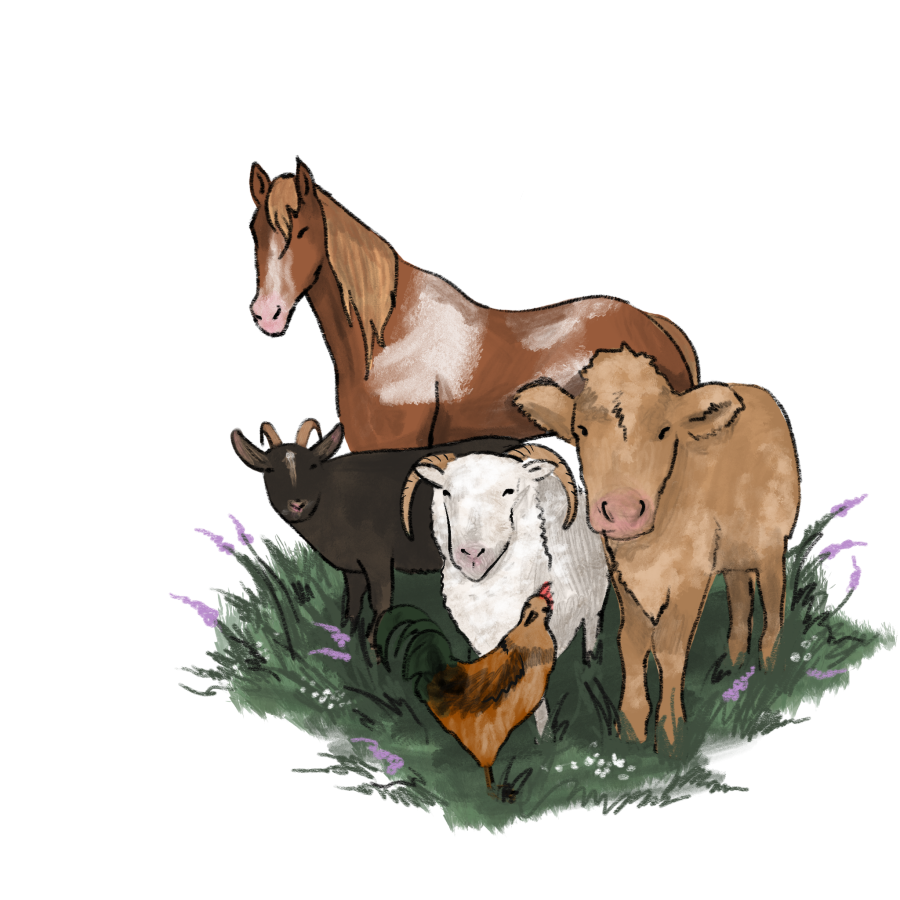Content warning: Description of violent and sexually graphic images and discussion of rape.
Have you been to a grocery store and picked up a gallon of milk? Did you smile as you saw Old MacDonald’s farm, his rolling green pastures, his grazing cows? And were you pleased to see his red barn on the packaging of your pork, chicken, turkey?
Did you think Old MacDonald loved, respected and cared for his animals? That on his farm his animals lived a peaceful life, died a peaceful death?
But have you been to the farm?
When you found the farm’s location on Google Maps, were you surprised it led to the middle of nowhere, hidden from society? Did you drive up to find Old MacDonald’s rotting gravestone by several massive barns, whose sleek metal casing carefully hides their interior?
Did you open a barn door only to release the overwhelming moans of thousands of suffering animals? And when the stench of waste-ridden air accosted you, did you gag?
As you walked through its filthy pathway, did you face the pregnant pigs forced to stand in crates so narrow they can’t turn around? Did you see their piglets torn from them at birth, hear them shriek in pain as their testicles were ripped off and their soft, curled tails cut without pain relief?
The meat industry claims their agony is necessary for the smell and taste of their meat. Could you still believe that if you saw it happen?
Hey, have you ever thought about your milk and where it comes from?
Well, human mothers can only breastfeed after giving birth. So, like all mammals, cows have to give birth to produce milk.
From 14 months old, female cows are kept on a constant cycle of birth, milking and artificial insemination until years later when they’re sent to the slaughterhouse. Have you heard this before? Or do you think the farm hid this so you can drink your daily glass of milk with peace of mind?
Did you know that all forms of animal agriculture require forcibly impregnating animals? This involves a worker inserting their arm far into an animal’s rectum and forcing semen into her. When animals on factory farms are violated, it’s called “artificial insemination.”
And what about the male animals?
If veal is the flesh of a calf, do you understand that male cows must be killed as children?
Will you imagine, for a moment, a human mother, still in her hospital gown, holding her newborn baby? With a tenderness in her eyes, she passes her hand over her child’s head, holding his delicate hands in hers.
Now, can you imagine a cow, moments after birthing her calf? As she caresses her yearning calf, who clings to her for protection, do you see that she loves her child as profoundly as a human does?
But how do you feel when you hear the tractor pull up just minutes later and see the mother’s frightened eyes as her calf is ripped away from her?
When she screams as her child is driven away, crying, unaware of the torturous death he will soon endure, do you find that calf undeserving of life and love?
And does it bother you that male chicks, who can’t lay eggs or grow to commercial size are often shredded alive, gassed, suffocated, electrocuted?
Have you ever thought that no animal is safe from the horrors of factory farms?
Ninety-nine percent of animals raised for food in the U.S. are on factory farms — whether your meat, dairy, or eggs are from McDonald’s or Whole Foods, the animals suffered.
So, having been to a factory farm do you realize that farm animals are alive and suffering, and that you don’t have to add to their pain? That by buying animal products, you are supporting the inhumane practices of factory farms? Can you instead set an example of seeking justice rather than harm?



